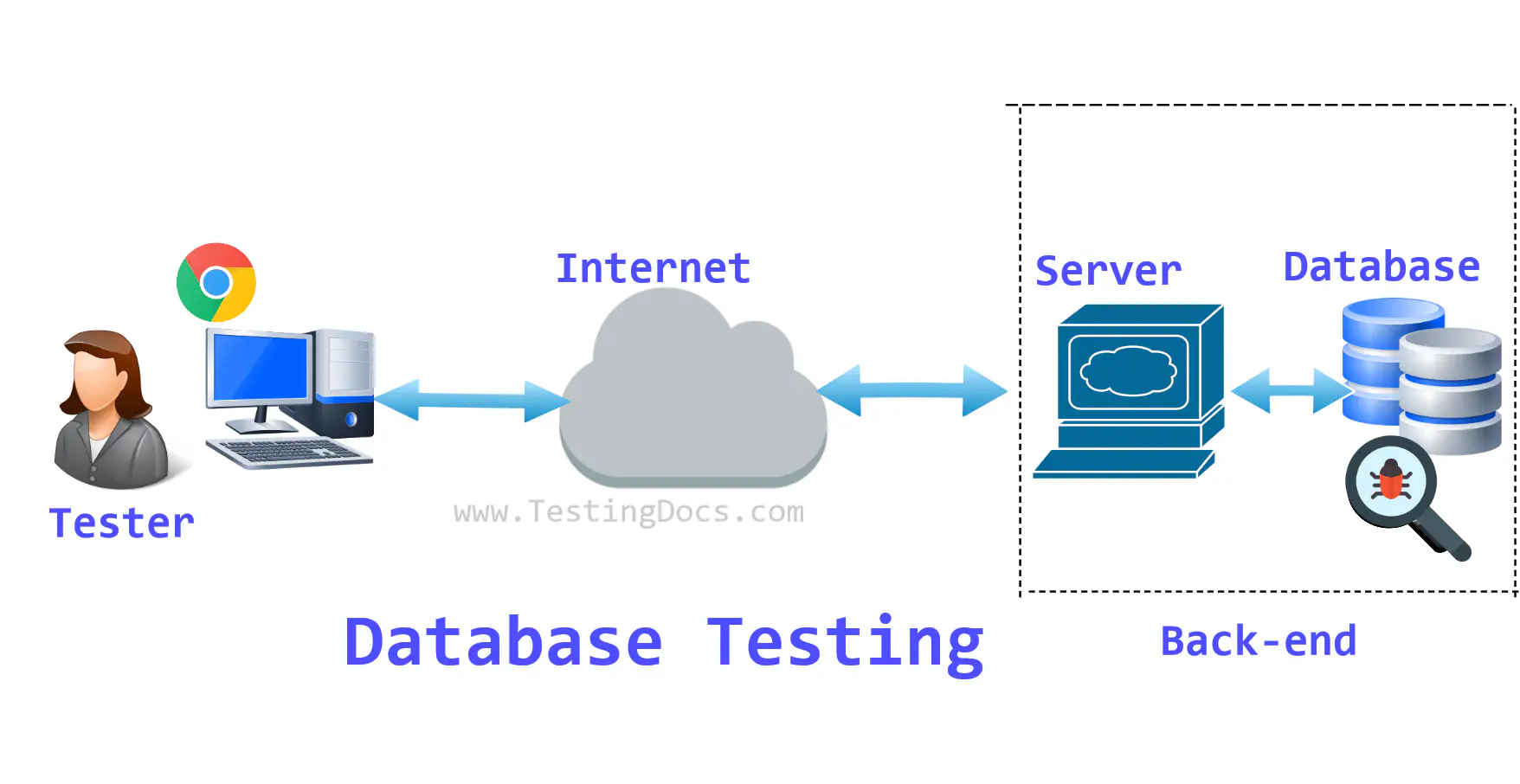Database Testing
Overview
Database Testing is a type of software testing that is carried out to verify the database. Most software applications use databases to store data. Modern applications use RDBMS and NoSQL databases as the backend. Database Testing is part of Backend Testing.
Database Testing
Database testing is software testing that checks the database schema, tables, data integrity, constraints, procedures, and triggers. It ensures database systems’ integrity, reliability, accuracy, efficiency, security, and performance.
Database testing checks whether the database is working correctly. It’s part of backend testing, which usually checks the application’s backend, i.e., server-side and database. It’s called the backend because these components are non-user-interfacing, unlike the front-end( UI).

Many aspects need to be covered while testing the database. Key aspects are as follows:
- Data validity
- Data Constraints
- Transactions
- Stored procedures
- Triggers
- Database performance
Types of Database Testing
There are two types of database testing.
- Manual Database Testing
- Automated Database Testing
The team checks the database manually without using any tools. Manual database testing is time-consuming and takes a lot of test effort and time if the database has more tables.
On the other hand, automated database testing uses automated tools to verify the database. This type of testing is more reliable and fast.
Database Tools
Various testing tools are available. The choice often depends on factors such as the type of database system, testing requirements, and the testing methodology being used for the application.
Some popular tools are as follows:
- DbUnit
- Selenium
- JMeter
- DataFactory
- TestComplete
- Apache Spark
- Oracle Data Integrator
More information on Selenium






